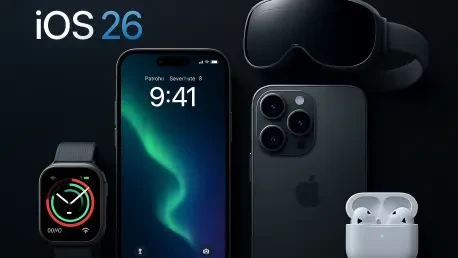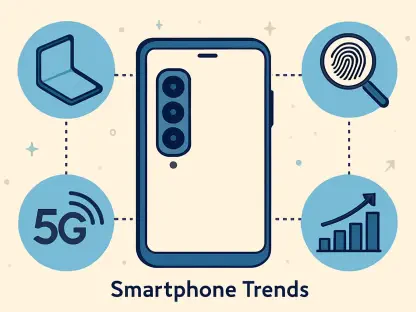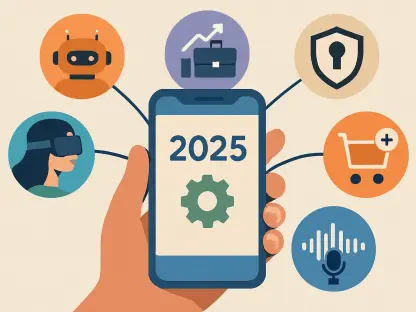As technology continues to evolve at a breathtaking pace, Apple remains at the forefront with its latest innovations, captivating millions of users worldwide with each release, and this year is no exception. The spotlight shines on iOS 26, a software update poised to redefine convenience and functionality for iPhone users, rolling out in September. Alongside this, Apple is preparing an impressive array of hardware releases, including the much-anticipated iPhone 17 series, Apple Watch Series 11, and updated AirPods models. These developments are not just incremental upgrades but a testament to Apple’s vision of creating a seamlessly integrated ecosystem that enhances every aspect of digital life. From smarter power management to cutting-edge digital identification, the features of iOS 26 promise to elevate user experience, while the upcoming hardware lineup hints at groundbreaking advancements. This exploration delves into the specifics of these updates, uncovering how Apple continues to shape the future of technology with a focus on practicality, security, and innovation.
Exploring the Core Features of iOS 26
The foundation of Apple’s software advancements this year lies in iOS 26, a release that introduces subtle yet impactful tools designed to streamline daily interactions with devices. A notable highlight is the Adaptive Power Mode, tailored exclusively for iPhone 15 Pro and newer models. This feature offers a nuanced approach to battery conservation by implementing minor adjustments, such as slightly dimming the display or slowing non-essential background processes. Unlike the more restrictive Low Power Mode that kicks in automatically at critical battery levels, this option can be manually enabled through the Settings app under the Battery section. It provides users with a balanced way to extend device usage without sacrificing significant performance, catering especially to those who rely heavily on their iPhones for extended periods. This thoughtful addition underscores Apple’s commitment to addressing user needs with precision, ensuring that power management evolves alongside increasingly demanding applications and usage patterns.
Another transformative feature in iOS 26 is the Digital Passport, integrated into the Apple Wallet app for U.S. users. This functionality allows the creation of a digital version of a passport, usable for identity verification at select TSA checkpoints during domestic travel. Although it does not replace a physical passport and is not valid for international journeys, its utility extends beyond travel to include secure age and identity verification for online purchases and in-store transactions. Apple has emphasized the robust security measures embedded in this feature, aligning with REAL ID standards to protect sensitive information. This development marks a significant step toward digital convenience, reducing the need to carry physical documents for certain scenarios while maintaining a high level of privacy. It reflects a broader trend of integrating essential personal data into mobile ecosystems, positioning the iPhone as a central hub for both personal and professional needs, with an eye toward future expansions in digital identity solutions.
Enhancing Connectivity with AirPlay and AirPods
iOS 26 pushes the boundaries of connectivity and entertainment through innovative features like AirPlay for CarPlay, a tool that enables wireless video streaming directly from an iPhone to a vehicle’s CarPlay display. Safety remains paramount, as playback is restricted to times when the vehicle is parked, automatically pausing if motion is detected. This ensures that drivers remain focused on the road while still offering passengers or stationary users the chance to enjoy content on a larger screen. However, the rollout of this feature depends heavily on automaker support, which could mean delays for some users or the necessity of newer vehicle models to fully leverage this capability. This dependency highlights a challenge in Apple’s ecosystem expansion, where third-party collaboration plays a critical role in bringing software innovations to life. Despite potential hurdles, this feature sets a new standard for in-car entertainment, blending convenience with a firm commitment to safety protocols.
Complementing this, iOS 26 introduces remarkable updates for AirPods, transforming them into more versatile accessories within Apple’s ecosystem. One standout capability is the option to use AirPods as a camera remote for the iPhone’s Camera app or compatible third-party applications. This cross-device functionality allows users to capture photos or videos hands-free, ideal for group shots or creative content creation where positioning the phone at a distance is necessary. Such an enhancement demonstrates Apple’s strategy of maximizing the potential of existing hardware through software updates, adding value without requiring additional purchases. This integration not only enriches the user experience but also reinforces the interconnected nature of Apple’s product lineup, where each device complements the others. As audio accessories evolve into multifunctional tools, this update signals a future where AirPods could take on even more roles beyond music and calls, further embedding them into daily routines.
A Glimpse into Apple’s Hardware Innovations for the Year
Turning attention to hardware, Apple’s lineup for this year promises to amplify the capabilities introduced in iOS 26 with a series of eagerly awaited devices. The iPhone 17 series, slated for announcement on September 9, with pre-orders beginning on September 12 and availability starting September 19, is generating significant buzz. While detailed specifications remain scarce, expectations are high for the Pro models to debut exclusive features that build on the software advancements of iOS 26. This synchronized release strategy ensures that new hardware fully leverages the latest software optimizations, offering users a cohesive experience from day one. Beyond smartphones, the Apple Watch Series 11 is set to launch alongside the iPhone, rumored to include a faster S11 chip and enhanced health-monitoring tools. These updates continue to position Apple’s wearable as a leader in personal wellness technology, blending performance with features that cater to health-conscious consumers seeking actionable insights from their devices.
Further enriching the hardware portfolio, Apple is preparing updates to its audio lineup with AirPods Pro 3 and a redesigned AirPods Max 2, both expected around the fall. AirPods Pro 3 are anticipated to debut alongside the iPhone 17, potentially introducing refined audio quality and new integrations with iOS 26 features. Meanwhile, AirPods Max 2 are rumored to be lighter, addressing user feedback on comfort while incorporating upgraded technology for an enhanced listening experience. These releases underscore Apple’s dedication to evolving its audio products into essential components of a broader tech ecosystem, where each device plays a unique role in enhancing functionality. Though exact timelines for AirPods Max 2 remain unclear, the anticipation surrounding these updates reflects a growing demand for premium audio solutions that seamlessly integrate with other Apple products. Together, this wave of hardware innovations signals a comprehensive approach to meeting diverse user needs, from communication to entertainment and beyond.
Reflecting on Apple’s Strategic Vision
Looking back, Apple’s efforts with iOS 26 and the accompanying hardware releases showcase a deliberate focus on refining user experience through thoughtful innovation. The introduction of features like Adaptive Power Mode and Digital Passport addresses practical needs, balancing efficiency with security in ways that resonate with everyday users. Meanwhile, enhancements such as AirPlay for CarPlay and AirPods’ camera remote functionality highlight a commitment to connectivity, ensuring devices work harmoniously across various contexts. The synchronized unveiling of the iPhone 17 series, Apple Watch Series 11, and updated AirPods models in September demonstrates a cohesive strategy that pairs software advancements with cutting-edge hardware. As these developments unfold, they cement Apple’s reputation for creating an integrated ecosystem where each update builds upon the last. Moving forward, attention should shift to how these innovations adapt to real-world challenges, such as automaker support for CarPlay features, and whether Apple can expand access to exclusive tools across more devices, ensuring broader impact in the evolving tech landscape.









